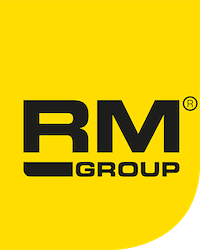In this year’s apprentice project, a machine error troubleshooting device was designed, built and programmed by Magdalena Frauenberger and Markus Schaffer. As part of their apprenticeship, each apprentice is given the opportunity to plan and manage their own project. Ideas for these projects often come from other departments.
The inconspicuous looking device that is approximately A4 in size is connected to the machine by two cables and can do more than it might seem at first glance. Magdalena explains: “Using our device, the machine error codes can be displayed quickly and easily.” Until now, this was a time-consuming and complicated process. The error codes could only be displayed at the machine as 3-digit codes. You then had to look for the solution to the error in a page-long table. Thanks to the invention of the two young technicians, this lengthy process is no longer necessary. “Our device displays the relevant error code with the corresponding troubleshooting solution. It also indicates whether a switch or a conveyor belt is switched on or off,” says Magdalena.
The two apprentices started with some online research to get an idea of how this device could take shape. “We first picked out the hardware and the corresponding technical drawing from the Internet,” Magdalena explains. “Then we planned the whole project in detail and put together a shopping list. The necessary components were purchased and then we started building the actual device.” Magdalena describes what happened next: “Since we had little experience with programming, we did some exercises with the Codesys program. Then we started assembling the hardware and programming the display and the user interface.”
When they encountered problems, they both received support from motivated employees. Magdalena describes some of the challenges they faced during the project: “Of course there were some difficulties. For example, the insulation on a wire was pinched at the terminal so that there was no electrical contact and the data was not transmitted. The soldering was also a bit complicated because we patched together our own distributor and so the soldering was a bit difficult.”
Magdalena is already thinking about the further development and improvement of the device: “We have got the device in production right now where it is being tested on various machines.” The ambitious technician says: “I am not yet completely satisfied with the idea that the machine error troubleshooting device has to be connected up to a socket inside the engine compartment. This means that the operator has to climb into the machine to plug it in, which is pretty awkward.” When the device is fully developed, it will be included in our production process to support the start-up of the machines. This will help ensure quality is maintained at all RM Group locations. Magdalena confirms that every project is only as good as its team: “The cooperation between Markus and me worked very well and we are extremely proud of the final result!”
This enthusiasm really comes across when Magdalena talks about her apprenticeship in general. She knows exactly what she likes about her apprenticeship at RUBBLE MASTER: “I am only at the beginning of the 3rd year of my apprenticeship and I really like the fact that I can already work independently and am a trusted member of the team. In other companies, apprentices are often in the trainee workshop up to the 3rd year of their apprenticeship and when they do finally reach production, they are not allowed to do much. I also think it’s great that I’m allowed to make mistakes and that I’m shown how to correct them, because that’s the only way you really learn.” RUBBLE MASTER attaches great importance to growing together as a team. “I would recommend to anyone considering a technical apprenticeship that they arrange a trial day,” says Magdalena.





